While the linear economy uses a ‘take-make-dispose’ sequence, the core defining element of Circular Economy (CE, henceforth) is the restorative use of resources. Raw materials shall not become discarded waste. By no means is KALA an expert in this area, but we want to share these ideas to fellow architects and designers, while at the same time trying to implement the approach to the way we curate our product lines.
The roots of material circulation date back many decades. It was proposed by Kenneth E. Boulding in 1966. He mentioned that circular systems within the global economy are unavoidable in order to guarantee human life on earth in the long run.
The most recognised definition in CE is offered by the Ellen MacArthur Foundation:
“A circular economy is one that is restorative and regenerative by design and aims to keep products, components and materials at their highest utility and value at all times, distinguishing between technical and biological cycles..”
Kirchherr et al., (2017) analysed 114 definitions of CE, the authors ultimately defined it as: “An economic system that replaces the ‘end-of-life’ concept with reducing, alternatively reusing, recycling and recovering materials in production/ distribution and consumption processes….
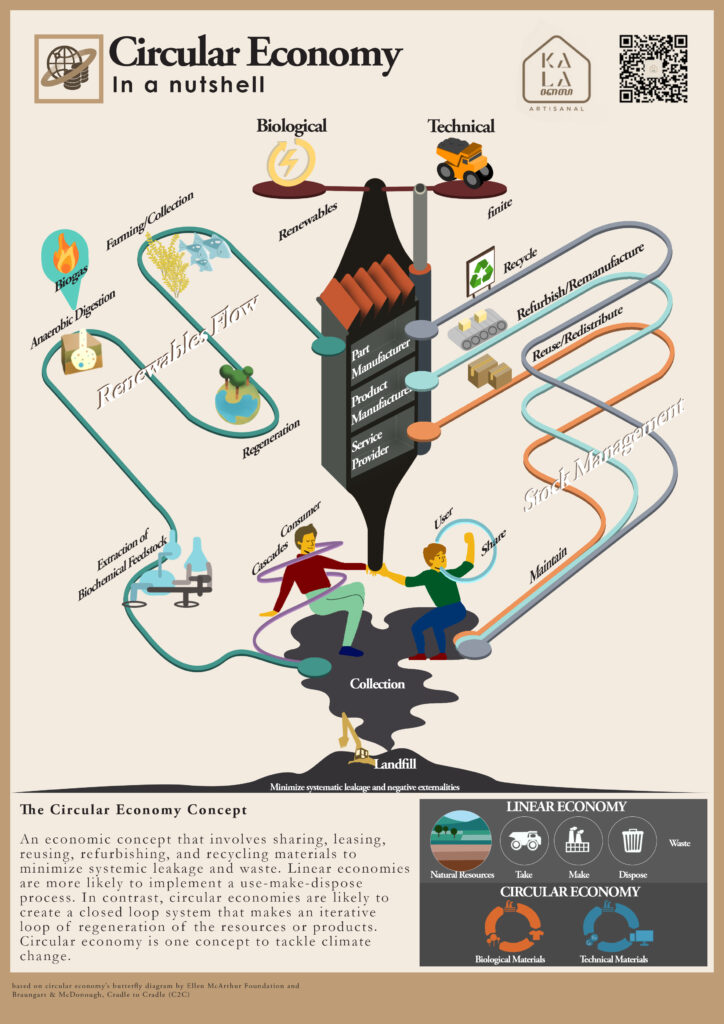
The system diagram system illustrates the continuous flow of technical biological materials through the ‘value circle’. The biological materials (on the left) are those materials that can safely re-enter the natural world once they have gone through one or more use cycles. The technical materials on the right cannot re-enter the environment. These materials such as metals, plastics, and synthetic chemicals, must continuously cycle within the system so their value can be captured and recaptured.
Related CE concepts include: Cradle-to-Cradle, Blue Economy, Regenerative Design and Closed Supply Chains which can be explored further in Geisendorf and Pietrulla (2018).
Kanters (2020) posits that barriers to circular building design include: the lack of standard methods, it can be seen as a higher financial risk, transformation to a CE is difficult especially when materials with high circular potential are needed to keep up with the demand, and also lack of flexibility in building codes and regulations.
At a very small scale we tried to implement this in Bamboo Pod 3 (click here and here)’s post-disassembly. Link to Bamboo Pod 3 articles can be found at the bottom of this article. Design for Disassembly (DfD) is one of the key strategies the KALA and AKSEN team have been studying. Although in a bigger scope of work such as multi-storey buildings the scalability might be problematic, we are keen to explore. We are currently brainstorming the approach for an interior design scope of work, wherein the change of interior design is deemed to be more often than the change of architecture. In particular this can be achieved through a clean disassembly, where parts and joints are easily accessible for maintenance using mechanical joinery (as opposed to non-removable, chemical ones) and its reusability in different interior projects.
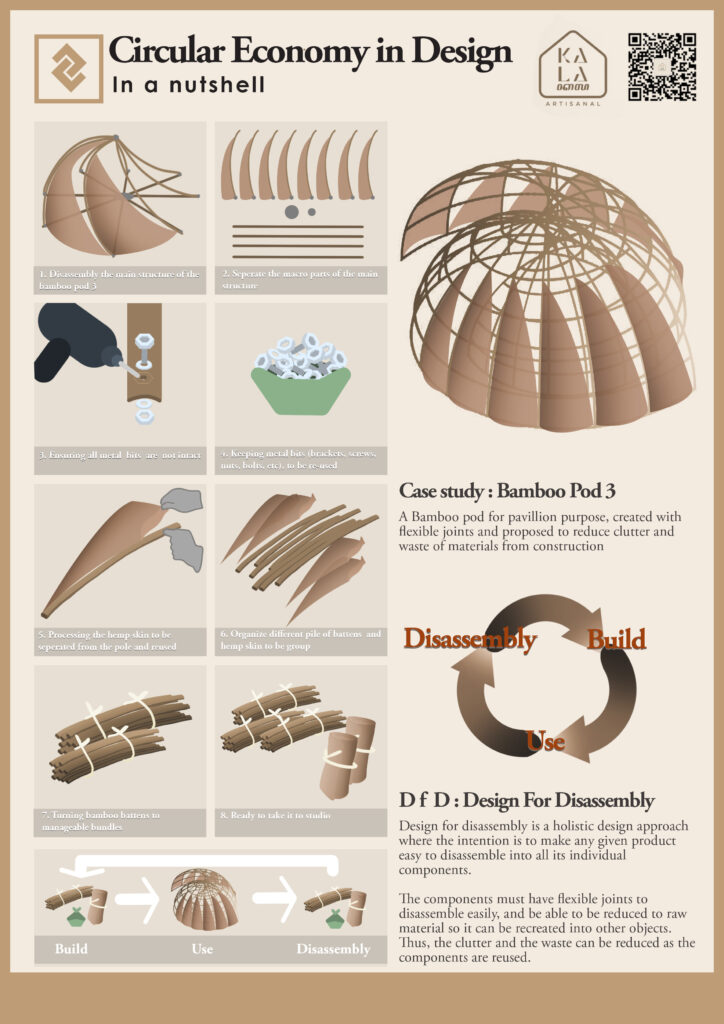
On other note, materials from Bamboo Pod 3 are being re-purposed as part of KALA’s packaging (hemp cloth and ties) and we also turned the 5mm bamboo battens to bamboo quadcopters. They were particularly popular with the young pilots we did the workshop with in October 2021.
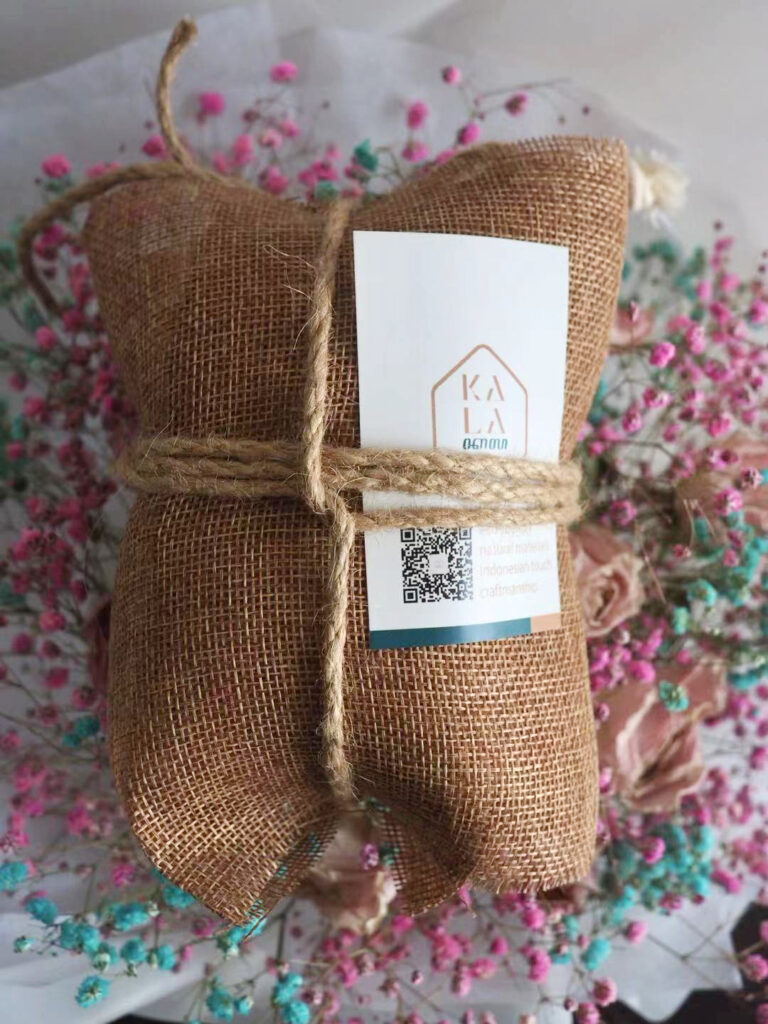
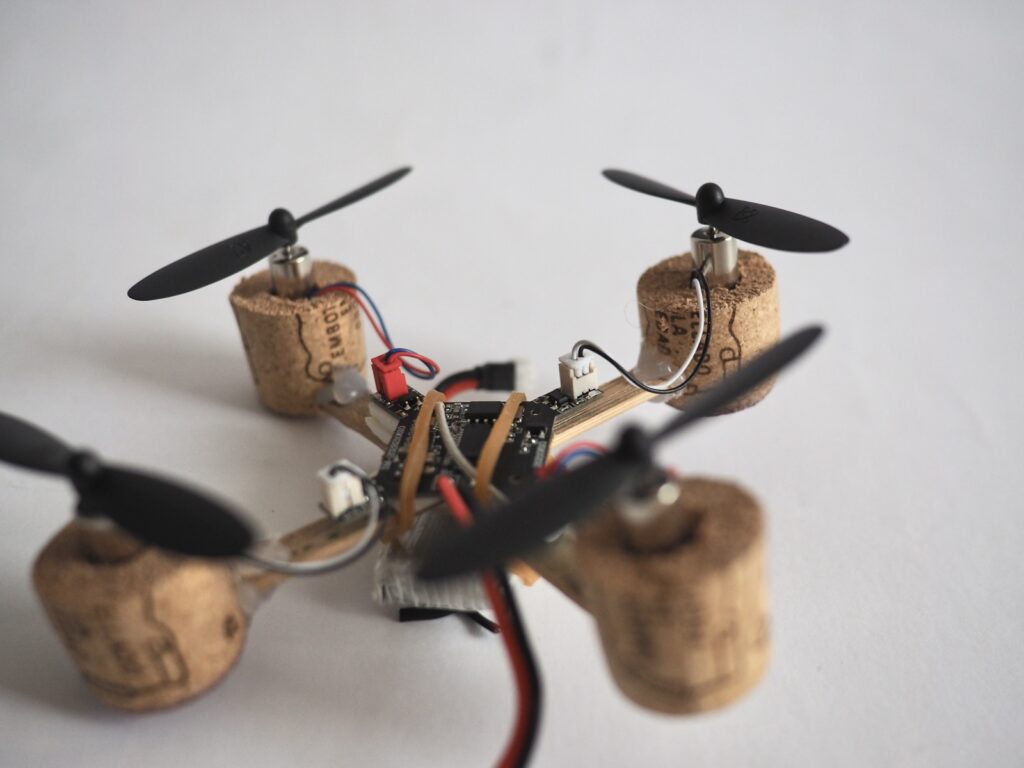
Lastly, we want to conclude with an diagram adapted from Rahla et al. (2021), with regards to circular design principles. Through this exercise we also want to share KALA’s selected products which encapsulate these design principles, albeit still on a small scale. With these reflections in mind, we want to show it is possible to include circular design principles in any kind of design
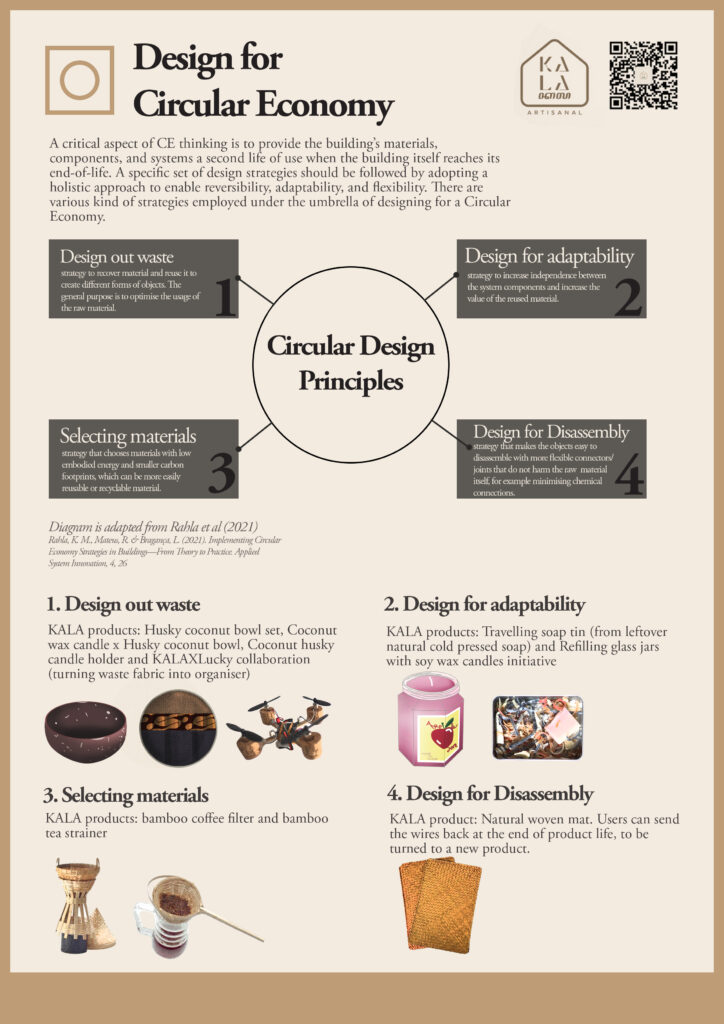
References:
Geisendorf, S. & Pietrulla, F. (2018). The circular economy and circular economic concepts—a literature analysis and redefinition. Thunderbird International Business Review, 60, 771-782.
Kanters, J. (2020). Circular building design: An analysis of barriers and drivers for a circular building sector. Buildings, 10, 77.
Kirchherr, J., Reike, D. & Hekkert, M. (2017). Conceptualizing the circular economy: An analysis of 114 definitions. Resources, conservation and recycling, 127, 221-232.
Rahla, K. M., Mateus, R. & Bragança, L. (2021). Implementing Circular Economy Strategies in Buildings—From Theory to Practice. Applied System Innovation, 4, 26.
Infography by Ben and text by Mia
You can also view this article in our official WeChat account:
For English : (tba)
For Chinese : (tba)
ABOUT KALA
KALA was founded by Mia and Elza Tedjosaputro, in May 2020. KALA provides high quality stylish home decor and accessories that highlight a few simple attainable changes towards an eco-friendly lifestyle. There is always an Indonesian touch ensuring we empower our craftsmen and promote Indonesian culture and craftsmanship. KALA’s specific design language is the use of natural materials and artisanal, with a sense of play of texture and product functionality. We are based in Indonesia and China.
